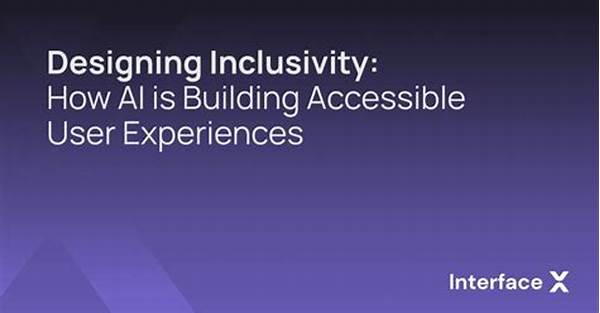AI Inclusivity in User Interface
In the rapidly evolving digital landscape, AI inclusivity in user interface is not just an option but a necessity. As we explore the vast reaches of artificial intelligence, the importance of ensuring that these technologies cater to a diverse audience becomes paramount. Imagine a world where technology recognizes every voice, where interfaces are adaptable to various needs, and where AI plays a crucial role in bridging the accessibility gap. Such a world is not futuristic; it’s happening now, and at its core lies the concept of inclusivity in AI-driven user interfaces.
According to recent research, approximately 15% of the world’s population experiences some form of disability, yet a significant portion of digital products lack sufficient accessibility features. The statistics are staggering but also a call to action for designers and developers worldwide. AI inclusivity in user interface seeks to dismantle these barriers. It isn’t just about accessibility; it’s about empowerment and giving every individual the opportunity to engage and interact with technology effortlessly. From voice recognition that accommodates diverse dialects and languages to interfaces that adjust in real-time to user preferences and abilities, the potential of AI in creating inclusive environments is immense.
Integrating AI inclusivity in user interface systems often requires marrying cutting-edge technology with empathy and understanding. It’s about recognizing that every user is unique and developing interfaces that celebrate these differences rather than presenting them as obstacles. In doing so, we are not just enhancing user experience but also fostering a digital environment where everyone feels seen, heard, and valued. It’s a noble endeavor with substantial economic and social benefits that extend beyond the individual to society as a whole.
The Transformative Impact of AI on User Interface Design
The magic happens when AI inclusivity in user interface design brings forth transformative results. With the addition of AI algorithms capable of learning and adapting to human behaviors, interfaces become more intuitive and customized. Consider a scenario where a visually impaired user can seamlessly navigate a shopping website using voice commands enhanced by AI, or think about interactive learning platforms that adjust their teaching methods based on real-time student feedback to better suit their learning capabilities.
In essence, AI inclusivity in user interface design is a step towards creating a more equitable digital space. By leveraging artificial intelligence, businesses and technology providers can ensure that their products are not just user-friendly but user-centric — putting the user experience above everything else. By doing so, the doors to a vast, diverse user base open wide, fostering loyalty and engagement, which are crucial for any business’s long-term success.
Moreover, companies investing in these technologies showcase their commitment to social responsibility. It is an opportunity for brands to align with values of equality and inclusion, traits becoming increasingly important to modern consumers. As a result, AI inclusivity in user interface not only transforms the way we interact with technology but also how businesses engage with their audience, creating a symbiotic relationship that benefits both parties profoundly.

